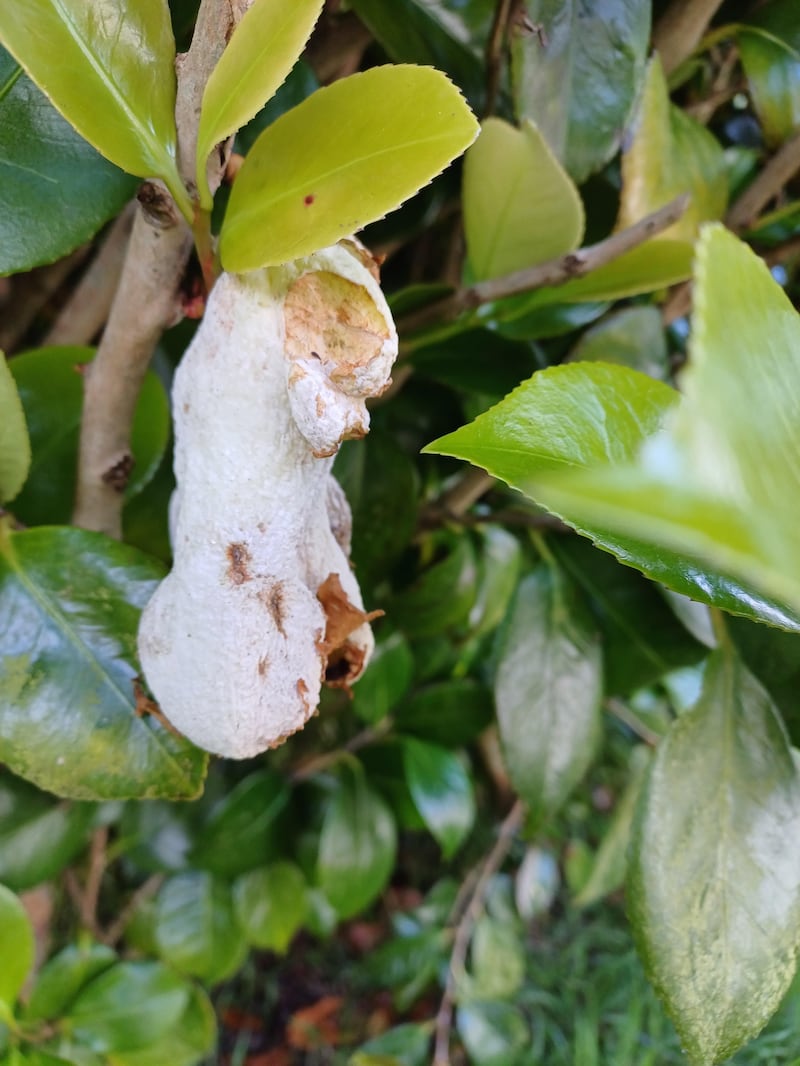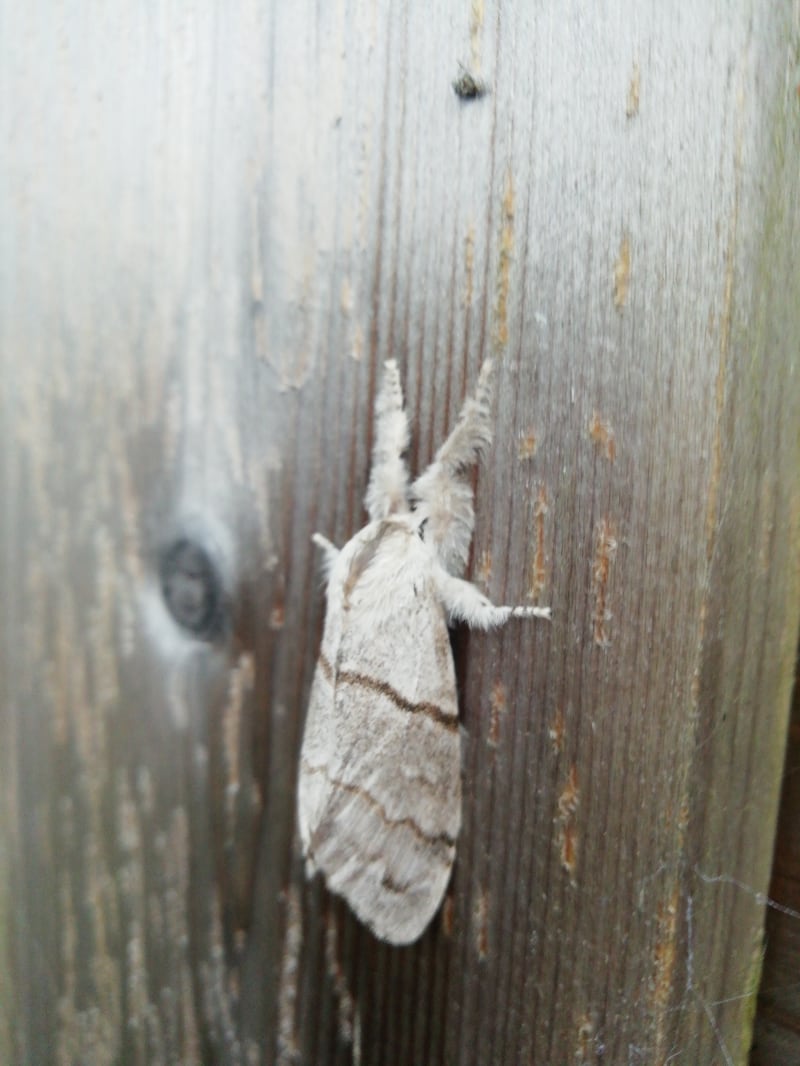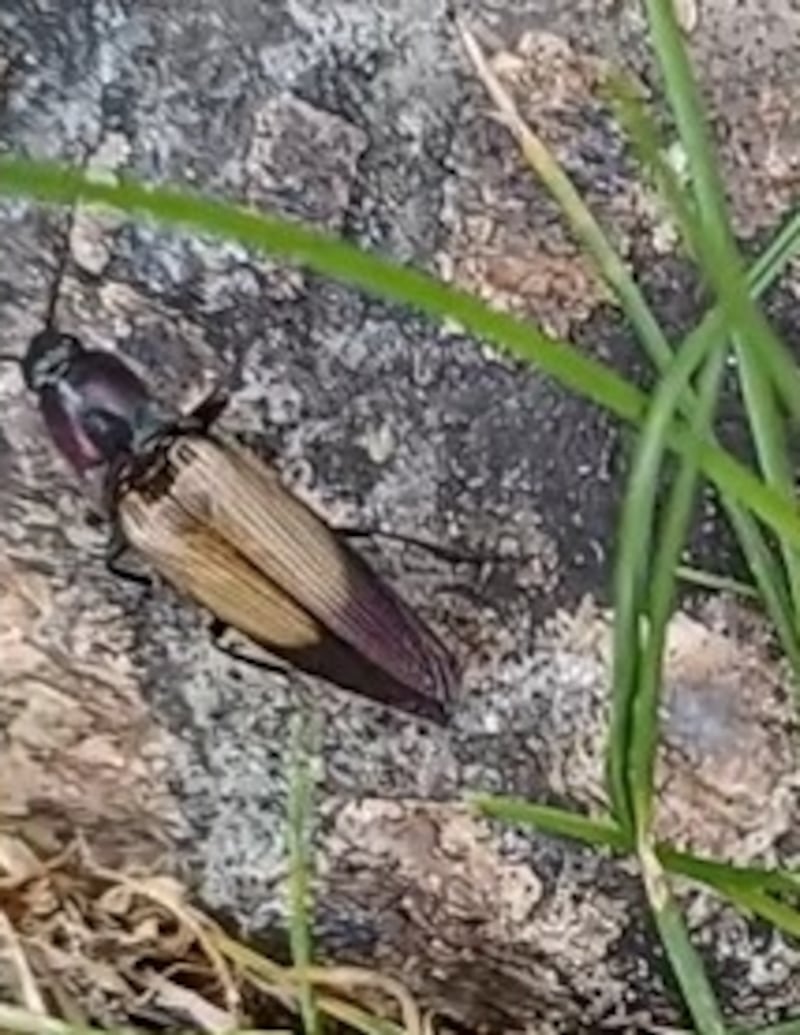Here is a razorbill on Skellig Michael in June. John Glynn, Kilrush
Some 400 razorbills were recorded there in summer 2023. These seabirds have been censused here since 1991, when 300 were counted. The numbers are up since Star Wars: The Force Awakens was filmed in 2014, when 200 were recorded.

We’ve had four of these on the camellias in our garden. I wrapped each one in a plastic bag before cutting from the branch and disposed of them in the bin. Are they wasps’ nests? I’m anxious to know as I’m allergic to insect bites. Patricia Williams
Wasps’ nests are made of chewed-up wood and are papery as a result. This is not a wasps’ nest at all but a gall of Camellia bushes, caused by the fungus Exobasidium camelliae. Infection by Exobasidium spores gives rise to the formation of white- to cream-coloured galls, favoured by wet weather in early summer. The galls are initially hard and green in colour, consisting of both plant and fungal tissues. As infection progresses, the galls take on a creamy colour resulting from the numerous spores produced by Exobasidium. When mature, the galls are soft, variable in shape, often elongate (as in the image) and measure up to 15cm, with a smooth or wrinkled surface. Typically, few galls are formed per camellia bush and little or no long-term damage is caused to the plant.
READ MORE

I just came home from Berlin to find this beautiful moth in my back garden. However, I don’t know what it is. Ita Delogu, Dublin
Well, you didn’t bring it back with you anyway because this is a native species: the pale tussock moth. This is the female and is very hairy indeed. Hairs can be irritating if handled, so admire from a distance.

I saw the beetle mid-May on a dry windy day. It was first clinging to a grass blade, then spread its wings and sailed to the ground. It appeared to have thin underwings and was about 1cm long. Irene Deisler
This is a click beetle, Ctenicera cuprea. Adults are usually seen from May to July. Males are particularly conspicuous, resting at the tops of grasses and on flowers of umbellifers and thistles. When alarmed they fly off and sometimes land on their backs on the ground. They then have to right themselves, which they do by bending their body backwards until they rest on their head and tail tips. Then they let go suddenly and, like a trapeze artist, spring upwards with a click and land right-side up this time. Their larvae are the wireworms that attack plant roots and cause crop damage.

I’d appreciate your wisdom on this little mystery. This wriggly creature was spotted in the birds’ drinking pan. The pan is fed with rainwater from the roof. The wormy thing is about 140mm long. Could some little bird have coughed it up? Lorcan Leavy
It is a thunderworm. After wet weather and thunderstorms in early summer, thunderworms can appear overnight on plants. These are long threadlike roundworms that definitely were not there the day before. They are here now to lay eggs on the plants and then their job is done. These eggs are then eaten by grasshoppers and caterpillars and quickly hatch out inside them. They grow by digesting the body fluids of the host. And when big enough to manage on their own, they leave and live in the soil, where we never notice them. After heavy rains in June, they can slither up on to plants in the garden or polytunnel, lay their eggs, die, and the whole process then starts again. This one somehow must have got entangled on a bird’s foot.
Please submit your nature query, observation, or photo, with a location, via irishtimes.com/eyeonnature




















